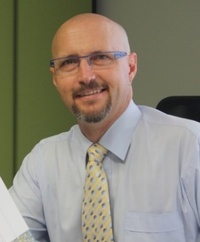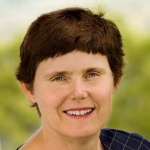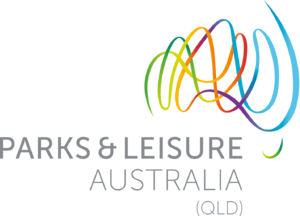Keynote Speakers
Steve Burgess
“I’m stuck in the car, and you didn’t even leave the windows down!”
Good cities, towns and villages are about choice, equity and sustainability. We should have access to information and infrastructure that enable us to choose a healthy life that leaves behind a minimum footprint.
This is not as easy as its sounds and required significant awareness from investors, planners and consumers as to the impacts of choices, and more importantly the impact of certain choices not being available.
One of the largest impact an individual person has on the environment (natural, economic and social) is using a private motor car. Many consumers are unaware of this, but in most towns it wouldn’t matter. The choice of doing without a car has mostly been taken away from us. The layout or shape of our cities is such that you need one. If you cant afford one or want to reduce your environmental impact, or live a more active lifestyle by not using one, your choice of the services and locations you can equally access are severely restricted. No choice, it is not sustainable and it is not equitable – you are stuck, and we have to figure a way out…without smashing the window.

Bio
| Steven Burgess is an Engineer and an urban strategist and very popular speaker on urban issues throughout Australia, New Zealand and North America. He was principal author for the book “Complete Streets – Guidelines to Urban Street Design” published in 2010 and is working on the NACTO/Bloomberg Global Street Design initiative. Steven has had 25 years professional experience working throughout Australia as well as projects in New Zealand, the United States and the Middle East. |
Dr Thomas Astell-Burt & Dr Xiaoqu Feng
The business case for investing in green space for health purposes: what do we know, what do we think we know, and what do we need to know?
The human, financial and wider societal costs of obesity and
chronic non-communicable diseases like type 2 diabetes mellitus in Australia are
high, but not inevitable. Prevention and better management are needed to
prevent complications and empower people to live long, healthy and happy lives.
One problem is the determinants of obesity and diabetes risk are
intergenerational, environmental, multifaceted and inequitably distributed. There
is growing belief – and evidence – that the equitable provision of quality
green space can play a potentially key role in supporting a healthier, more
liveable Australia. However, in order to develop the business case for
investing in green space for health purposes, it is crucial to take stock of
the evidence and build accordingly. In this presentation, we will summarise the
areas in which we have strong international evidence for the health benefits of
green space, the areas where we think there could be mileage but have weak
evidence to support thus far, and the key outstanding gaps in knowledge that
are crucial to address.
Bio: Dr. Thomas Astell-Burt’s research is located at the interface between population, wellbeing and environmental studies using a range of quantitative approaches (e.g. Geographic Information Systems). Thomas is leading an National Health and Medical Research Council-funded project to identify built and natural environments that support better diabetes care. He is interested in building multisectoral partnerships, enhancing evidence for decision makers and, in particular, developing the business case for investing in more and better quality green spaces for health purposes. He is working with Dr Xiaoqi Feng to co-direct the Population Wellbeing and Environmental Research Lab (PowerLab).
Career Summary:
- Graduated in 2010 with a PhD in Social Epidemiology
- Named Park and Leisure Australia’s ‘Emerging Leader’ for 2014
- 77 publications (65 published, 12 under review)
- Over $2.3 million in research income
Selected publications:
- Astell-Burt T, Feng X, Kolt, GS. Greener neighborhoods, slimmer people? International Journal of Obesity. 2014. 38(1): 156-159. (Impact Factor: 5.22)
- Astell-Burt T, Feng X, Kolt, GS. Is neighbourhood green space associated with a lower risk of Type 2 Diabetes Mellitus? Evidence from 267,072 Australians. Diabetes Care. 2014. 37(1): 197-201. (Impact Factor: 8.6)
- Astell-Burt T, Mitchell R, Hartig T. The association between green space and mental health varies across the lifecourse. A longitudinal study. Journal of Epidemiology and Community Health. 2014. 68: 578-583 (Impact Factor: 3.19)
- Astell-Burt T, Feng X, Badland HM, Mavoa S, Giles-Corti B. Do low-income neighbourhoods have the least green space? A cross-sectional study of Australia’s most populous cities. BMC Public Health. 2014. 14: 292 (Impact Factor: 2.32)
- Astell-Burt T, Feng X, Kolt, GS. Green space is associated with walking and moderate-to-vigorous physical activity (MVPA) in middle-to-older aged adults. British Journal of Sports Medicine. 2014. 48(5): 404-406. (Impact Factor: 3.67)
Bio: Dr Xiaoqi Feng is a Chief Investigator on a National
Health and Medical Research Council grant ($714K) and the National Heart
Foundation of Australia Fellow in Built Environment and Health at the
University of Wollongong. Xiaoqi has strong research interests in understanding
what types of green space promote the best start in life for children, and how
much green space is needed to help keep people healthy and out of hospital in
older age. This research is conducted in Australia (e.g. with the Western
Sydney Local Health District and Diabetes NSW) and in China (e.g. with the
China Center for Disease Control and Prevention (China CDC). She is working
with A/Prof Astell-Burt to co-direct the Population Wellbeing and Environmental
Research Lab (PowerLab).
Career Summary:
Leanne Evans
Levelling the Playing Field for Women and Girls
Women and girls are under-represented in just about every facet of sport. As owners of community sports facilities, councils have enormous scope to leverage these assets and their policies and funding to improve access for women and girls to participate in sport. Similarly, sports organisations play a major role in developing and delivering programs for women and girls and attracting women into leadership positions. Find out what the latest issues are in engaging women and girls in sport and what practical steps you can take to improve the health and wellbeing of women and girls in the community.

Bio
Leanne Evans has over 15 years’ experience in senior roles across sport developing community legacies. Leanne recently left the role of Executive Officer of the Australian Womensport and Recreation Association and is now delivering workshops for the Queensland Government’s ‘Building Active Communities’ program, mentoring workshops for women in sport and undertaking projects for other clients.
Prior to late 2012, Leanne spent more than a decade overseas, working for various Canadian health agencies and the YWCA of Vancouver, working to improve the health and wellbeing of women and girls. As a volunteer, Leanne has established and led grant programs for various women’s and community organisations including the Buderim Foundation, a local philanthropic body she helped found in 2004.
Her sport experience includes CEO of the Australian Sports Foundation and Deputy Director-General of the NSW Department of Sport and Recreation. Before that she was the first female CEO of both Touch Football Australia and Gymnastics Queensland.



